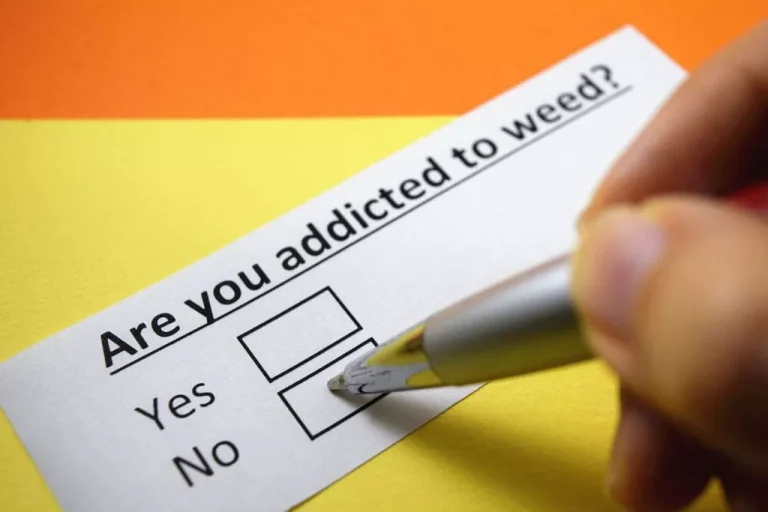Alcohol Withdrawal: How to Get Through It

Research the kinds of treatment that are available and discuss these options with your friend or family member. When you drink, sip slowly and take a break of 30 minutes or one hour between drinks. Drinking on an empty stomach is never a good idea, so make sure you eat food when you drink. Make it clear that drinking will not be allowed in your home and that you may not be able to attend events where alcohol is being served. BetterHelp is an online therapy service that matches you to licensed, accredited therapists who can help with depression, anxiety, relationships, and more. Take the assessment and get matched with a therapist in as little as 48 hours.
- Which option is best for you depends on how much you’ve been drinking, how long you’ve had a problem, the stability of your living situation, and other health issues you may have.
- If you’re struggling to wean off alcohol, it might be best to seek addiction treatment.
- For instance, your doctor might find that your heart and liver are in better shape, or your skin may have a certain new glow.
- People who are dependent on alcohol, or have other medical or mental health problems, should stop drinking completely.
- Use the NIAAA’s drink size calculator to determine the amount of alcohol in various drinks.
- You might turn to friends, family, and loved ones for this type of support, but this can be challenging if your past alcohol use has alienated people in your life.
TUI issues airport delay warning over passport rule change for Brits as Foreign Office says ‘expect queues’
One of the most exciting—and sometimes intimidating—parts of becoming sober is discovering who you are without alcohol. There’s a strong link between heavy drinking and depression, and hangovers often make you feel anxious and low. If you already feel anxious or sad, drinking can make this worse, so cutting down may put you in a better mood generally. Having a plan can help you stay on track and it can keep you safe.
How to Quit Drinking (or at Least Cut Back)

Get helpful tips and guidance for everything from fighting inflammation to finding the best diets for weight loss…from exercises to build a stronger core to advice on treating cataracts. PLUS, the latest news on medical advances and breakthroughs from Harvard Medical School experts. If you tend to drink too much whenever there is any alcohol in the house, get rid of it altogether, the NIAAA how to stop drinking recommends. Food can absorb the alcohol in beverages, so eating before or even while you drink can dampen the effect and may make you want to drink less, says Crews.
Have a Plan
One of the keys to a successful taper is taking gradual steps that will cause as few side effects as possible. It’s common for the first symptoms to appear within a few hours after your last drink. Self Recovery has the aim that everyone can achieve deep and lasting change in their choices and beliefs.
- Women for Sobriety (WFS) offers substance use recovery programs designed specifically for people who identify as women.
- The NIAAA also offers pointers about resources for low- and no-cost treatment and support options, like getting in touch with your state’s agency for substance abuse help.
- Let friends, family members, and co-workers know that you’re trying to stop or cut back on drinking.
- Consider staging a family meeting or an intervention, but don’t put yourself in a dangerous situation.
Make a Plan
- This may mean making major changes to your social life, such as finding new things to do with your old drinking buddies—or even giving up those friends and finding new ones.
- According to the NIAAA, alcohol pretty much affects you head to toe.
- Make a note about how you feel physically and mentally on these days—recognizing the benefits may help you to cut down for good.
- In particular, she’s committed to helping decrease stigma around mental health issues.
Rather than one overarching “I want to quit drinking” goal, start by telling yourself you’re going to cut back. Maybe you do a dry January to really jump-start the plan. American Addiction Centers recommend no more than one drink a day for women and two drinks a day for men, so keep that in mind as you’re setting a goal to cut back. These symptoms may start a few hours or a few days after your last drink of alcohol.
Change your environment

However, self-affirmation exercises may be time-consuming. Structured self-affirmation exercises that take up less time, such as answering a series of yes or no questions, can also be effective in helping people reduce or stop drinking alcohol. Exploring, in writing, what you find difficult and when you most want to drink can help you notice patterns that offer more insight into your alcohol use. Comparing the emotions that come up when you have a drink with the feelings you experience when abstaining also helps you recognize when drinking doesn’t fix the problems you’re trying to manage. By avoiding alcohol, you’re taking a big step toward improving physical health.

Addiction and Mental Health Resources

If your alcohol consumption has been heavy or chronic, you may be dependent on alcohol. This means that if you suddenly stop drinking, you may experience symptoms of alcohol withdrawal. While getting sober is an important first step, it is only the beginning of your recovery from alcohol addiction or heavy drinking. Rehab or professional treatment can get you started on the road to recovery, but to stay alcohol-free for the long term, you’ll need to build a new, meaningful life where drinking no longer has a place.
